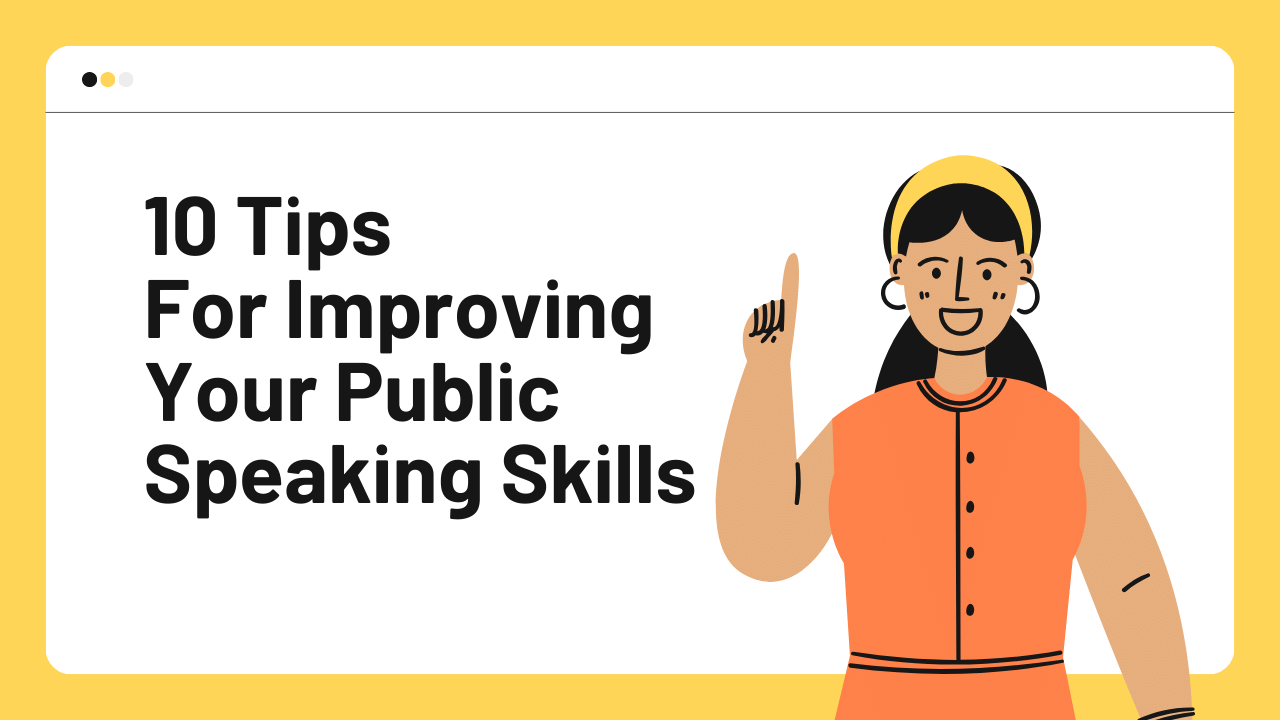Snakes? Fine. Flying? No problem. Public speaking? Yikes! Just thinking about public speaking — routinely described as one of the greatest (and most common) fears — can make your palms sweat. But there are many ways to tackle this anxiety and learn to deliver a memorable speech.n part one of this series, Mastering the Basics of Communication, I shared strategies to improve how you communicate. In part two, How to Communicate More Effectively in the Workplace, I examined how to apply these techniques as you interact with colleagues and supervisors in the workplace. For the third and final part of this series, I’m providing you with public speaking tips that will help reduce your anxiety, dispel myths, and improve your performance.
Here Are My 10 Tips for Public Speaking:
1. Nervousness Is Normal. Practice and Prepare!
All people feel some physiological reactions like pounding hearts and trembling hands. Do not associate these feelings with the sense that you will perform poorly or make a fool of yourself. Some nerves are good. The adrenaline rush that makes you sweat also makes you more alert and ready to give your best performance.
The best way to overcome anxiety is to prepare, prepare, and prepare some more. Take the time to go over your notes several times. Once you have become comfortable with the material, practice — a lot. Videotape yourself, or get a friend to critique your performance.
2. Know Your Audience. Your Speech Is About Them, Not You.
Before you begin to craft your message, consider who the message is intended for. Learn as much about your listeners as you can. This will help you determine your choice of words, level of information, organization pattern, and motivational statement.
3. Organize Your Material in the Most Effective Manner to Attain Your Purpose.
Create the framework for your speech. Write down the topic, general purpose, specific purpose, central idea, and main points. Make sure to grab the audience’s attention in the first 30 seconds.
4. Watch for Feedback and Adapt to It.
Keep the focus on the audience. Gauge their reactions, adjust your message, and stay flexible. Delivering a canned speech will guarantee that you lose the attention of or confuse even the most devoted listeners.
5. Let Your Personality Come Through.
Be yourself, don’t become a talking head — in any type of communication. You will establish better credibility if your personality shines through, and your audience will trust what you have to say if they can see you as a real person.
6. Use Humor, Tell Stories, and Use Effective Language.
Inject a funny anecdote in your presentation, and you will certainly grab your audience’s attention. Audiences generally like a personal touch in a speech. A story can provide that.
7. Don’t Read Unless You Have to. Work from an Outline.
Reading from a script or slide fractures the interpersonal connection. By maintaining eye contact with the audience, you keep the focus on yourself and your message. A brief outline can serve to jog your memory and keep you on task.
8. Use Your Voice and Hands Effectively. Omit Nervous Gestures.
Nonverbal communication carries most of the message. Good delivery does not call attention to itself but instead conveys the speaker’s ideas clearly and without distraction.
9. Grab Attention at the Beginning, and Close with a Dynamic End.
Do you enjoy hearing a speech start with “Today I’m going to talk to you about X”? Most people don’t. Instead, use a startling statistic, an interesting anecdote, or a concise quotation. Conclude your speech with a summary and a strong statement that your audience is sure to remember.
10. Use Audiovisual Aids Wisely.
Too many can break the direct connection to the audience, so use them sparingly. They should enhance or clarify your content, or capture and maintain your audience’s attention.
Practice Does Not Make Perfect
Good communication is never perfect, and nobody expects you to be perfect. However, putting in the requisite time to prepare will help you deliver a better speech. You may not be able to shake your nerves entirely, but you can learn to minimize them.




